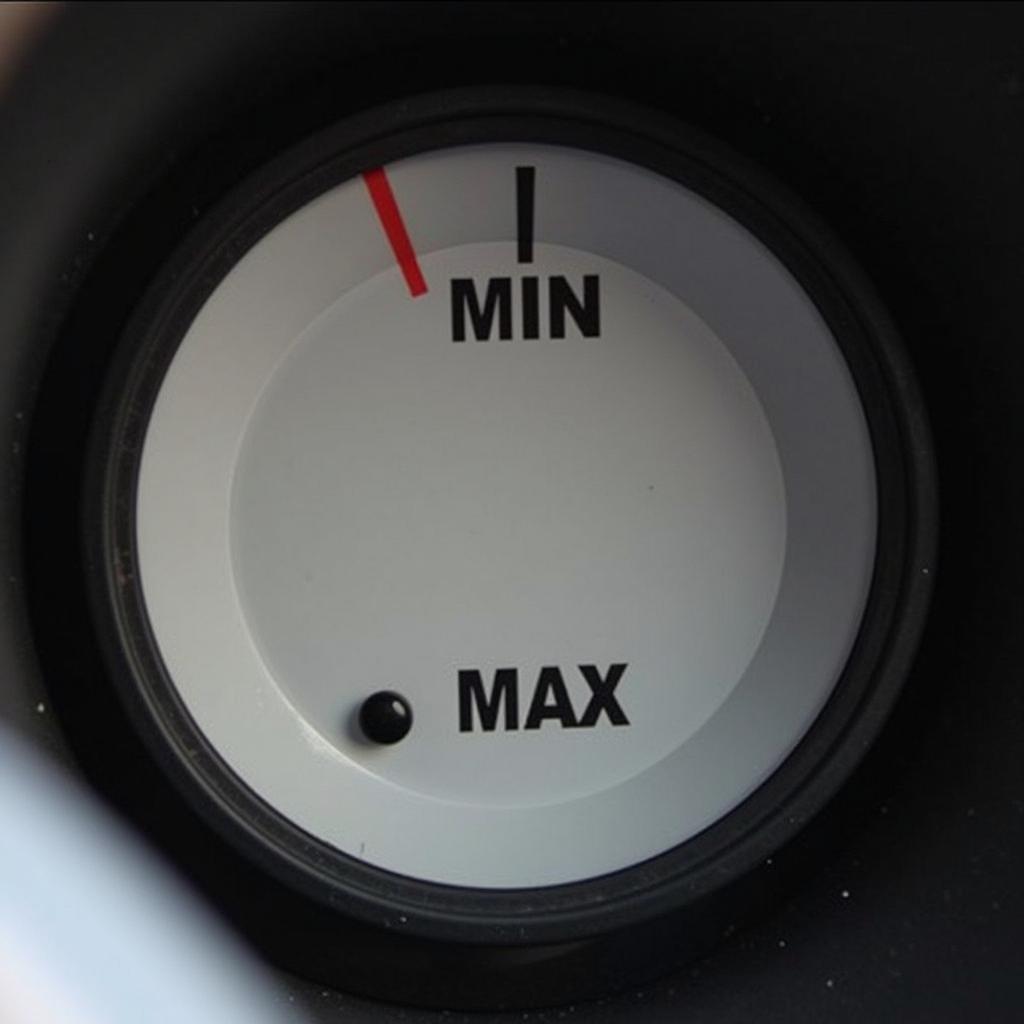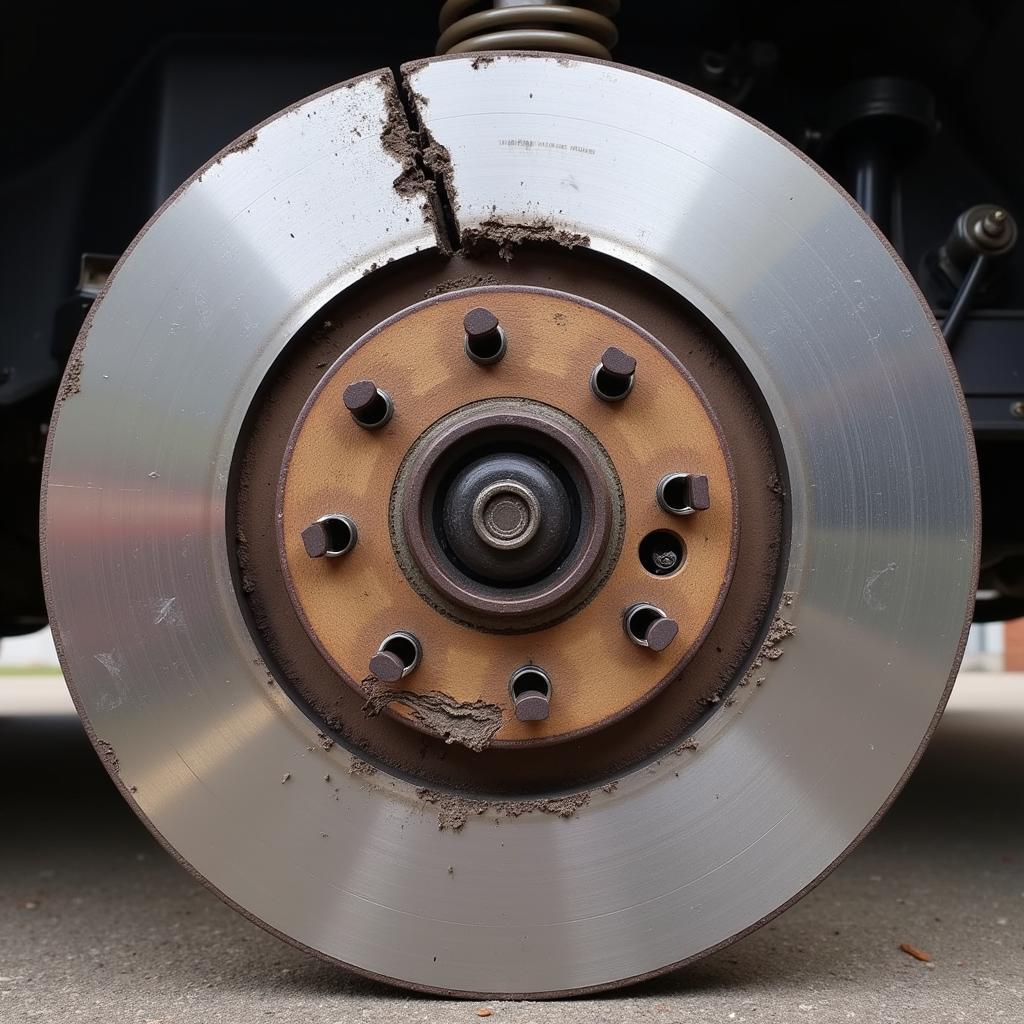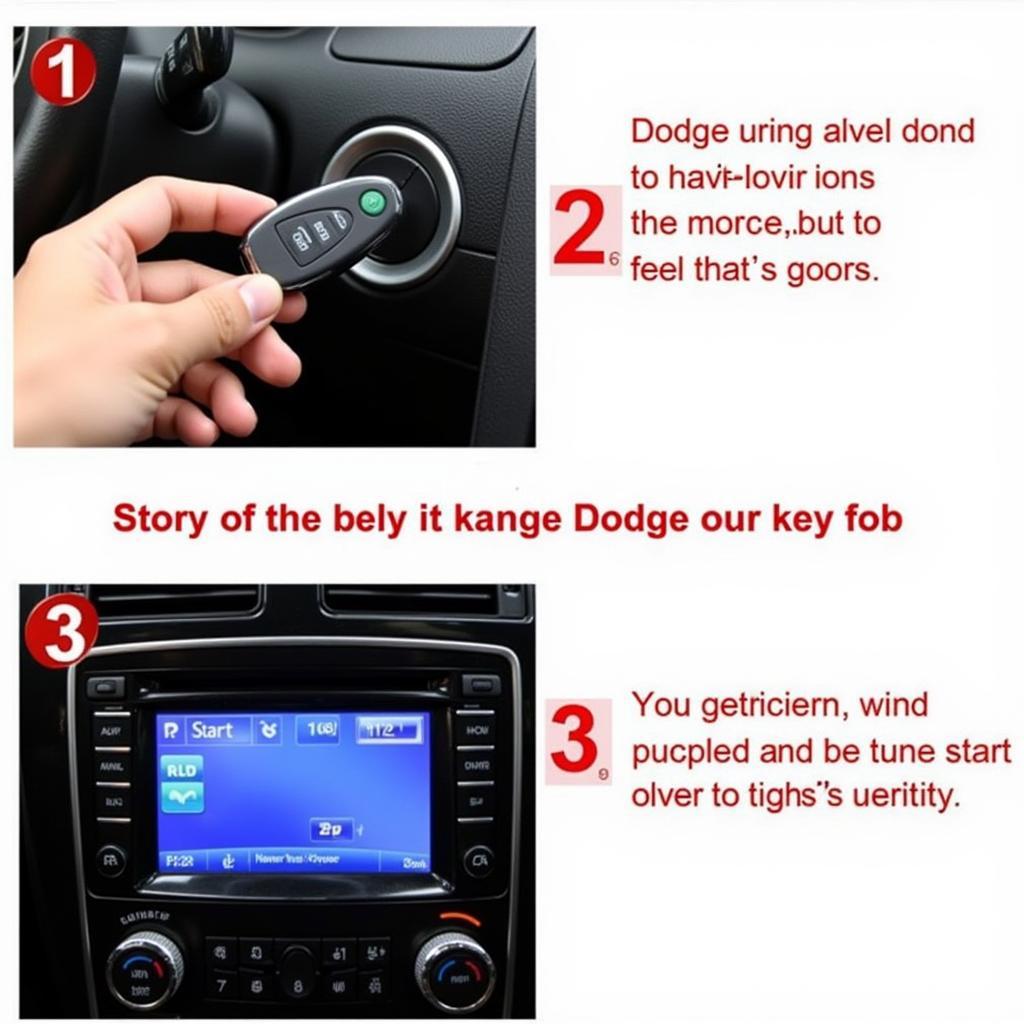Is your 2017 F150’s brake warning light illuminating on the dashboard and refusing to switch off? A persistent brake warning light is a clear indication that something is amiss within your truck’s intricate braking system, demanding immediate attention. While it can be a minor glitch, ignoring it could compromise your safety and lead to costly repairs.
This comprehensive guide delves into the common causes behind a 2017 F150 brake warning light staying on and equips you with the knowledge to address this issue effectively.
Understanding Your F150’s Brake Warning System
Before we dive into the potential culprits, it’s crucial to grasp how your F150’s brake warning system functions. The warning light on your dashboard is directly connected to several components, including:
- Brake Fluid Level Sensor: This sensor constantly monitors the level of brake fluid in the master cylinder. A drop below the minimum level triggers the warning light, often indicating a leak in the system.
- Parking Brake Switch: Engaging your parking brake activates this switch, illuminating the brake warning light. If the light remains on even after disengaging the parking brake, the switch itself might be faulty.
- ABS (Anti-lock Braking System): Your F150 is equipped with an advanced ABS system that enhances braking safety. Malfunctions within the ABS module or its related sensors can trigger the brake warning light.
Common Causes of a Persistent Brake Warning Light
Let’s explore the most frequent culprits behind a stubborn brake warning light in your 2017 F150:
1. Low Brake Fluid Level
The most prevalent cause is insufficient brake fluid. Brake fluid is essential for transmitting the force from your foot pressing the pedal to the brakes themselves.
How to check:
- Locate the brake fluid reservoir under the hood.
- Check the fluid level against the “Min” and “Max” markings.
Solution:
If the fluid level is low, carefully top it off with the recommended brake fluid type specified in your owner’s manual. However, simply adding fluid won’t address the underlying issue of a potential leak. It’s essential to inspect the brake lines, hoses, and calipers for any signs of leakage.
 2017 F150 Low Brake Fluid
2017 F150 Low Brake Fluid
2. Worn Brake Pads
Brake pads are designed to wear down over time. If they become excessively worn, the brake warning light will activate.
How to check:
- Remove the wheel to inspect the brake pads.
- Look for a wear indicator groove on the pad itself. If the groove is nearly gone or you can see the metal backing plate, it’s time for a replacement.
Solution:
Worn brake pads necessitate immediate replacement to ensure optimal braking performance and safety.
 Worn Brake Pads on 2017 F150
Worn Brake Pads on 2017 F150
3. Faulty Brake Switch
The brake light switch, positioned under the brake pedal, can malfunction due to wear and tear or adjustments in the pedal’s position.
How to check:
- Listen for an unusual clicking sound when pressing and releasing the brake pedal.
- Inspect the switch for any visible damage.
Solution:
A faulty brake light switch usually requires replacement. This is a relatively straightforward task for those comfortable with basic automotive repairs.
4. ABS Issues
As mentioned earlier, problems within your F150’s ABS, such as a faulty wheel speed sensor or a malfunctioning ABS module, can trigger the warning light.
How to check:
Diagnosing ABS issues typically requires specialized diagnostic tools.
Solution:
Addressing ABS problems often involves scanning the system for error codes to pinpoint the exact cause. It’s recommended to seek assistance from a qualified mechanic or dealership for ABS-related repairs.
When to Consult a Professional
While some causes of a persistent brake warning light can be addressed with basic troubleshooting, it’s always prudent to err on the side of caution. If you are unsure about performing any of the aforementioned checks or repairs yourself, or if the issue persists even after addressing the common causes, it’s strongly advised to consult with a qualified mechanic or your local Ford dealership.
Remember, your vehicle’s braking system is paramount for your safety on the road. Any issues within this system should never be ignored.
Conclusion
A perpetually illuminated brake warning light in your 2017 F150 should never be taken lightly. By familiarizing yourself with the potential causes outlined in this guide, you can gain a better understanding of the issue and take the appropriate steps to rectify it. Whether it’s a simple fix like topping off your brake fluid or a more intricate problem requiring professional attention, addressing the root cause promptly ensures your safety and the optimal performance of your F150.

